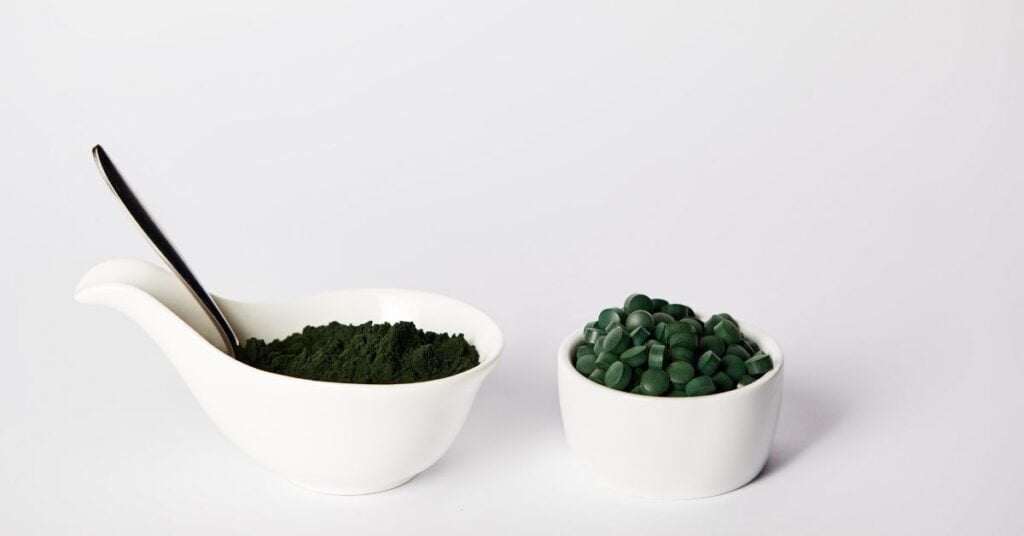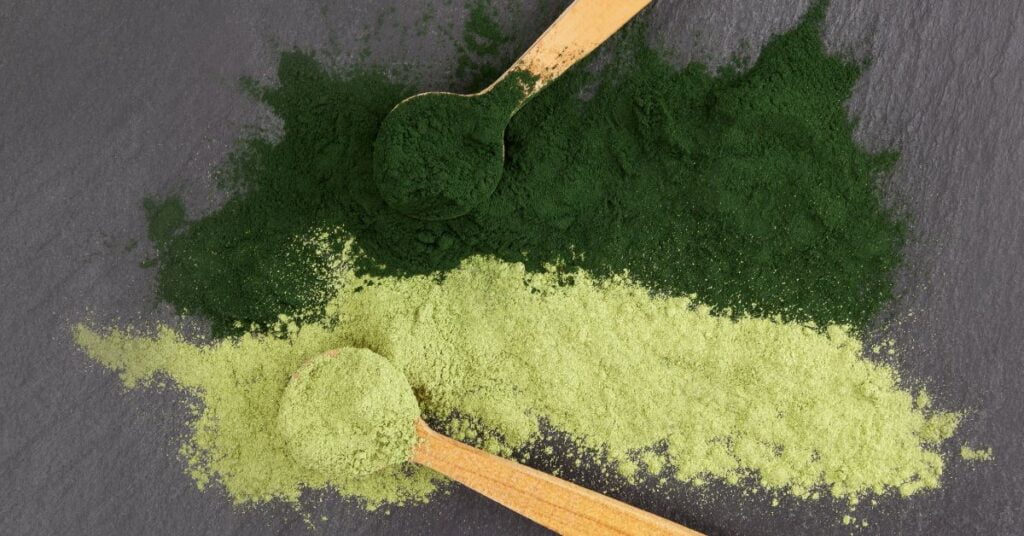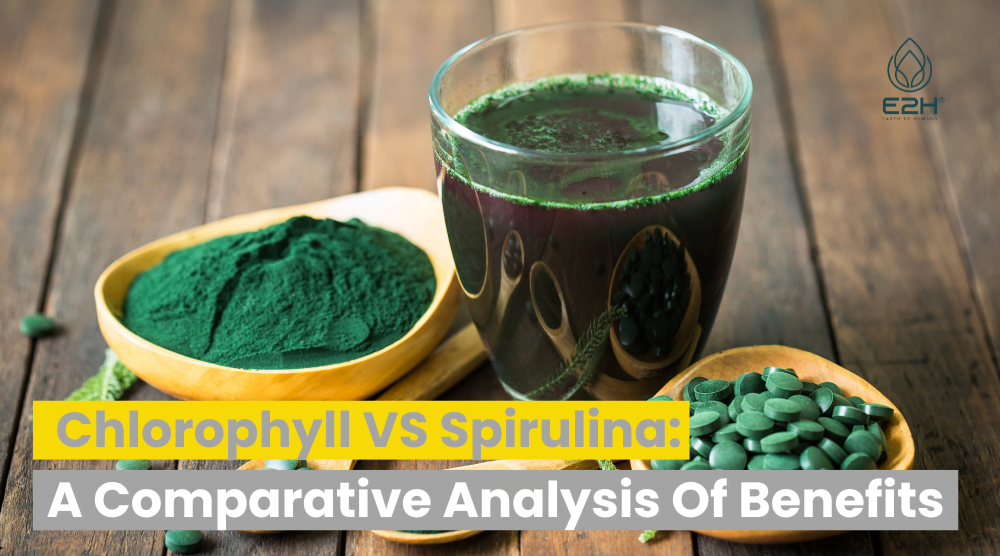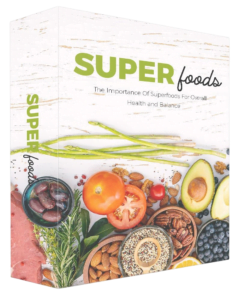Chlorophyll and spirulina are two popular supplements with different benefits. Chlorophyll supports detoxification and inflammation, while spirulina is high in protein and may boost immune function. It’s important to consider individual health needs and consult a healthcare professional before starting any new supplement regimen.
What is Chlorophyll?
Chlorophyll is a green pigment found in plants and algae that plays a crucial role in photosynthesis, the process by which plants convert sunlight into energy. It is responsible for absorbing light energy and transferring it to other molecules, and it gives plants their characteristic green color.

Chlorophyll is also a popular dietary supplement due to its potential health benefit, such as aiding in detoxification, reducing inflammation, and promoting healthy digestion. It can be consumed in supplement form or through the consumption of green, leafy vegetables.
What is Spirulina?
Spirulina is a type of blue-green algae that is commonly consumed as a dietary supplement due to its high nutritional content. It is rich in protein, vitamins, minerals, and antioxidants, and has been shown to have potential health benefit such as boosting immune function, reducing inflammation, and improving heart health.

Spirulina is often available in a powder form, or tablet form and can be added to smoothies, juices, or other foods. It is also used as a natural food coloring due to its deep blue-green hue.
Main Differences Between Chlorophyll and Spirulina
Chlorophyll vs spirulina: They are both popular dietary supplements that offer unique health benefit. Here are some of the main differences between the two:
Nutrient Content
Chlorophyll is lower in protein and omega-3 fatty acids compared to spirulina. Chlorophyll is primarily a source of vitamins and minerals, particularly vitamin K and magnesium, as well as antioxidants.
On the other hand, spirulina is a rich food source full of high doses of protein, containing all essential amino acid, and is also high in omega-3 fatty acids, vitamins, and minerals.
Calorie Content
Both chlorophyll and spirulina have a low calorie content, making them suitable for those looking to manage their own weight loss or calorie intake.
Essential Amino Acid
Both chlorophyll and spirulina contain essential amino acid, which are important for protein synthesis in the body. Amino acids are the building blocks of protein and are necessary for many bodily functions.
Potential Health Benefit
Chlorophyll is known for its potential benefits in supporting detoxification and reducing chronic inflammation. Spirulina, on the other hand, has been shown to boost the immune system function, improve heart health, and even have anti-cancer properties.
Potential Side Effects
Both chlorophyll and spirulina are generally considered safe for consumption in typical supplemental doses. However, some individuals may experience digestive upset or allergic reactions to spirulina.
Source
Chlorophyll is found in green plants and algae, while spirulina is a type of blue-green algae.
What are health benefit of using Chlorophyll and Spirulina?
Chlorophyll
- Supports detoxification and elimination of toxins from the body
- Reduces inflammation and oxidative stress
- Supports healthy digestion and gut health
- May have anti-cancer properties
- Helps in wound healing and reducing body odor
Spirulina
- Boosts immune function and may help prevent infections
- Improves heart health and reduces cholesterol levels
- May have anti-cancer properties
- Reduces inflammation and oxidative stress
- May help control blood sugar levels
Both are high in antioxidant properties?
Yes, both chlorophyll and spirulina are high in antioxidant properties. Antioxidants are compounds that help protect the body against damage from free radicals, which are unstable molecules that can cause cell damage and contribute to the development of chronic diseases. Chlorophyll is rich in chlorophyllin, a water-soluble derivative of chlorophyll that has been shown to have strong antioxidant properties.

Spirulina contains phycocyanin, a blue pigment with powerful antioxidant properties that may help protect against oxidative stress and inflammation. Including more protein these supplements in your diet may help boost energy levels and your overall antioxidant intake and support overall cardiovascular health.
Is Chlorophyll higher in fat and calories?
No, Chlorophyll is not higher in fat and calories. Chlorophyll is a pigment found in green plants and algae, and is primarily a source of vitamins and minerals, particularly vitamin K and magnesium. It has a very low calorie and fat content, making it suitable for those looking to manage their weight or calorie intake.
Liquid Chlorophyll are also typically low in calories and fat. However, it’s important to note that some chlorophyll supplements may contain added ingredients, so it’s always a good idea to check the nutrition label before purchasing any supplement product.
Chlorophyll contains higher levels of omega-3 fatty acids: Is it right?
No, Chlorophyll does not contain omega-3 fatty acids. Chlorophyll is a pigment found in green plants and algae, and while it does contain some essential nutrients like vitamins and minerals, it does not contain omega-3 fatty acids. Omega-3s are typically found in fatty fish, algae-based supplements, and some plant sources like chia seeds and flaxseed.
Does spirulina have a higher concentration of Omega-3?
Yes, spirulina algae has a higher concentration of Omega-3 fatty acids compared to chlorophyll algae. Spirulina algae is a type of blue-green algae that is a rich source of essential fatty acids, including Omega-3s. Specifically, spirulina contains alpha-linolenic acid (ALA), which is a type of Omega-3 that the body can convert into other forms of Omega-3s like EPA and DHA. However, it’s important to note that the amount of Omega-3s in spirulina can vary depending on the specific source and processing methods used.
Does spirulina and chlorophyll contain essential amino acids?
Yes, both spirulina and natural chlorophyll contain essential amino acid. Amino acids are the building blocks of protein, and essential amino acid are those that the body cannot produce on its own and must obtain through diet or supplementation.

Spirulina is a rich source of protein and contains all nine essential amino acid, making it a complete protein source. In fact, spirulina is often used as a protein supplement for athletes and vegans due similar many health benefits, due to its high protein content and nutrient density.
Chlorophyll, while not a complete protein source, does contain a variety of amino acids, including some essential amino acids like lysine, threonine, and valine. While the amount of amino acids in chlorophyll is relatively small compared to spirulina, including it in your diet may still provide some amino acid benefits.
Does spirulina and chlorophyll increase blood pressure levels?
There is currently no scientific evidence to suggest that either spirulina or chlorophyll increases high blood pressure’ levels. In fact, some studies have suggested that spirulina may have blood pressure-lowering effects due to its high content of antioxidants and anti-inflammatory compounds. Similarly, chlorophyll has been shown to have potential health benefits such as reducing inflammation and promoting healthy digestion.
Does it matter whether you consume or apply chlorophyll or spirulina topically?
While consuming chlorophyll and spirulina orally can provide health benefits, applying them topically may not have the same effects. The skin is a barrier that can limit the absorption of nutrients and other compounds, so applying chlorophyll or spirulina topically may not be as effective as consuming them orally.
However, there is some research to suggest that topical application of spirulina extract may have potential benefits more antioxidants for the skin. Spirulina extract contains compounds that have been shown to have potent antioxidant- and anti-inflammatory effects, which could help protect the skin from damage and promote healthy aging.
Chlorophyll, on the other hand, is not typically used topically and there is limited research on its potential effects on the skin. Some skincare products may contain chlorophyll as an ingredient, but it is often combined with other compounds and its effects are not well-understood.
Overall, while applying chlorophyll or spirulina topically may have some potential benefits, consuming them orally is likely to be more effective for achieving their health-promoting effects.
Differences between chlorella and spirulina
Chlorella and spirulina are both types of freshwater algae that are often used as supplements due to their rich nutrient content. While they share some similarities, there are also some key differences between the two. both spirulina and Chlorella is higher in chlorophyll content, has a more fibrous cell wall that may aid in detoxification, and is a rich source of vitamins and minerals.

On the other hand, both spirulina and chlorella is a richer source of protein and contains higher levels of certain vitamins and minerals, particularly iron. Ultimately, the choice between both chlorella, and spirulina may depend on your individual health needs and preferences.
Why Are Plant-Based Supplements So Beneficial for Your Health?
Plant-based supplements, such as chlorophyll and spirulina, are beneficial for your health because they contain a variety of nutrients and compounds that are essential for optimal health. These supplements are often rich in antioxidants, which can help protect the body from damage caused by free radicals and reduce the risk of chronic diseases such as cancer and heart disease.
In addition more protein, plant-based supplements often contain high levels of vitamins, minerals, and other nutrients that are important for maintaining overall health and wellness. For example, spirulina is a rich source of protein, iron, and B vitamins, while chlorophyll is a good source of magnesium and vitamin K.
Plant-based supplements may also have anti-inflammatory effects, which some studies suggest can help reduce inflammation in the body and promote healthy aging. Some studies have also suggested that plant-based supplements may help support healthy immune function and promote healthy digestion.
Overall, plant-based supplements offer a convenient and effective way to support your overall health and wellness. However, it’s important to talk to your doctor before starting to take any new supplements, especially if you have any underlying health conditions or are taking medications that could interact with these supplements.
Which is better chlorophyll or spirulina?
It’s not necessarily a matter of one being better than the other, with similar health benefits, as both chlorophyll and spirulina offer unique health benefits. Chlorophyll is a good source of magnesium and may help promote healthy digestion and reduce inflammation, while spirulina is a rich source of protein and contains high levels of vitamins and minerals that are essential for optimal health.

Ultimately, the choice between chlorophyll and other spirulina supplements may depend on your individual health needs and preferences. It’s always a good idea to talk to your doctor before starting to take any new supplements, to ensure that they are safe and appropriate for you.
What are the benefits of chlorophyll and spirulina take together?
When taken together, chlorophyll and spirulina can provide a range of health benefits. Chlorophyll can help promote healthy digestion, reduce inflammation, and support healthy detoxification, while spirulina is a rich source of protein, vitamins, and minerals that can help support healthy immune function and promote overall health and wellness.
Additionally, both chlorophyll and spirulina are rich in antioxidants, which can help protect the body from damage caused by free radicals and reduce the risk of chronic diseases such as cancer and heart disease. By combining these two supplements, you may be able to optimize your nutrient intake and support your overall health and wellbeing.
Spirulina VS Chlorella, Which One Should You Take?
FAQs
Is it safe to take both chlorophyll and spirulina together?
Yes, it is generally safe to take both chlorophyll and spirulina together. However, it is always recommended to consult with a healthcare professional before starting any new supplement regimen.
Can chlorophyll and spirulina be taken by children?
Both chlorophyll and spirulina can be taken by children, but it is important to adjust the dosage based on the child’s age and weight. It is also recommended to consult with a pediatrician before giving any supplements to children.
Are there any side effects of taking chlorophyll or spirulina?
While both chlorophyll and spirulina are generally considered safe, some individuals may experience side effects such as digestive upset, headaches, or allergic reactions. It is important to start with a small dose and gradually increase it to determine your own tolerance and avoid any potential side effects.
Conclusion
Both chlorophyll and spirulina offer unique health benefits and can be a valuable addition to a healthy lifestyle. Chlorophyll supports detoxification and inflammation while spirulina is high in protein and may boost immune function.
However, it’s important to consider individual health needs and consult with a healthcare professional before starting any new supplement regimen. A balanced and highly nutritious, diet and healthy lifestyle should always be prioritized for optimal health.
His research and writing have been featured in numerous publications, and he is dedicated to helping people understand the importance of these vital nutrients in maintaining optimal health. If you're looking to improve your well-being through diet and nutrition, Christopher is the expert to turn to.
- Can I Take Maca and Ashwagandha Together: YES! - January 7, 2024
- Can You Take Ashwagandha And Liquid Chlorophyll Together: YES! - January 7, 2024
- Can You Take Shilajit and Ashwagandha Together? - January 7, 2024










